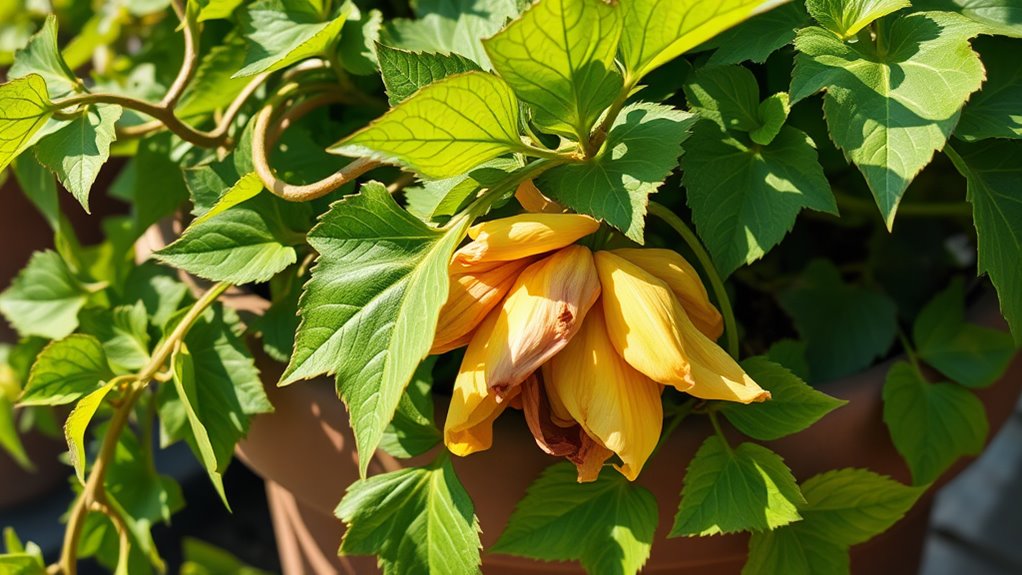Why You Should NEVER Plant These Together!
You risk ruining your garden’s health by planting incompatible pairs like tomatoes and potatoes, which share pests and diseases. You’ll see stunted growth if sunflowers overshadow shade-loving hostas, or if mint overtakes basil in your herb patch. Fruits such as melons and cucumbers compete for resources, while overcrowding root veggies invites rot and pests. Avoid these mistakes to protect your yields—uncover key strategies ahead for a flourishing space.
Incompatible Vegetable Pairings
If you’re planning your garden, you’ll quickly find that some vegetable pairings simply don’t work, as they compete for nutrients, spread diseases, or stunt growth.
Common companion planting mistakes include pairing tomatoes with potatoes, which invites shared pests and blights, or placing beans near onions, hindering nutrient uptake. Additionally, understanding common companion planting mistakes can help you avoid these errors by researching compatible veggies, ensuring robust yields and healthier plants.
Flowers That Clash in the Garden
When arranging your flower beds, you’ll notice that some blooms simply don’t get along, as they compete for sunlight, soil nutrients, or even attract the same pests.
For instance, avoid planting tall sunflowers near shade-loving hostas; they’ll overshadow and stunt growth.
Don’t pair aggressive spreaders like mint with slower perennials—wait, no, stick to flowers: keep daylilies away from delicate tulips to prevent domination.
Research and separate by needs for ideal health. Additionally, understanding effective companion planting can help you create a more harmonious garden environment.
Herbs to Avoid Planting Nearby
Just as with flowers, you’ll want to steer clear of pairing certain herbs in your garden, as they can compete fiercely for space, water, or nutrients, stunting growth or inviting pests.
For instance, steer clear of mint and basil together; mint overtakes.
Don’t combine rosemary with sage; they vie for water.
Fennel discourages growth in dill and cilantro, so plant it separately.
Additionally, understanding companion planting principles can help you make better decisions regarding which herbs to grow together.
Fruit Plants That Don’t Get Along
While we’ve explored herbs that clash in the garden, you’ll notice similar issues with fruit plants; for example, tomatoes and potatoes share diseases as nightshades, so keep them apart to prevent spread, and melons overpower cucumbers by hogging space and water. Additionally, avoid strawberries with raspberries as they attract the same pests, and peaches with plums to stop disease spread. Here’s a quick guide:
| Plant 1 | Plant 2 | Reason |
|---|---|---|
| Tomatoes | Potatoes | Share diseases |
| Melons | Cucumbers | Compete for resources |
| Strawberries | Raspberries | Attract common pests |
| Peaches | Plums | Risk cross-disease |
Companion plants can significantly improve tomato growth and flavor, making it crucial to consider these important combinations.
Common Mistakes With Root Vegetables
Root vegetables, like carrots and beets, can be tricky if you’re not careful, so let’s explore into the most common mistakes you make and how to sidestep them for healthier yields.
One error is overcrowding roots, stunting growth—space them properly.
Don’t plant near heavy feeders like potatoes; they compete for nutrients.
Guarantee well-drained soil to avoid rot, and rotate crops yearly to prevent pests and diseases. Additionally, consider incorporating innovative companion planting strategies to enhance growth and deter pests effectively.

